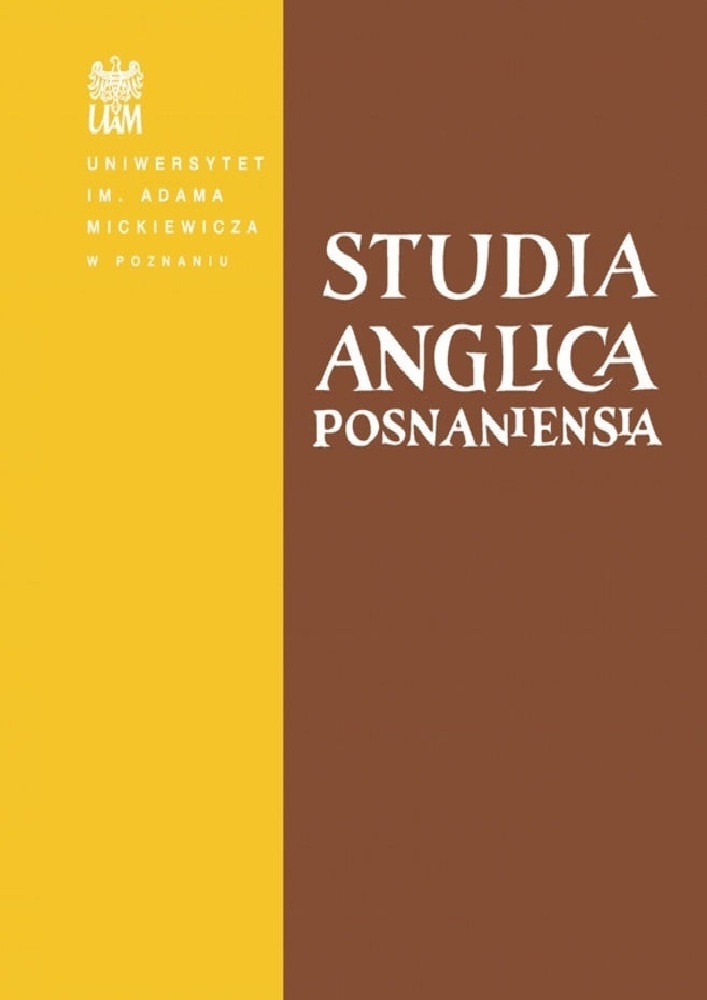Abstract
This paper discusses wiþer-nouns in Old English with the aim to verify which of them were applied with reference to ‘(the) evil spirit’. Thus, the texts compiled in the Dictionary of Old English Corpus have been searched for all the above-listed items. The identification of their uses has allowed us not only to determine the frequency of the words in question but also to specify whether the sense of ‘(the) evil spirit’ was core or peripheral for each lexeme.
References
[B-T] Bosworth, Joseph – T. Northcote Toller. 1898. An Anglo-Saxon Dictionary. Clarendon Press. Online edition available at http://www.bosworthtoller.com/. (accessed January-March 2020)
[DOEC] diPaolo Healey, Antonette, Joan Holland, Ian McDougall & Peter Mielke. 2000. Dictionary of Old English Corpus in Electronic Form. DOE Project 2000.
[MED] McSparran, Frances (ed.). The Middle English compendium: Middle English dictionary, hyperbibliography, and corpus of Middle English prose and verse. Humanities Text Initiative – University of Michigan. http://ets.umdl.umich.edu/m/mec/. (accessed January-March 2020)
[OED] Simpson, John A. & Edmund S. C. Weiner (eds.). 2000–. Oxford English Dictionary Online. (3rd edn, revised by John A. Simpson and others.) Oxford University Press. https://www.oed.com/ (accessed January–March 2020)
[TOE] Edmonds, Flora, Christian Kay, Jane Roberts & Irené Wotherspoon (eds.). A Thesaurus of Old English. King’s College London Centre for Late Antique and Medieval Studies. Online edition available at https://oldenglishthesaurus.arts.gla.ac.uk. (accessed January–March 2020)
Barton, George. 1912. The origin of the names of angels and demons in the extra-canonical apocalyptic literature to 100 A.D. Journal of Biblical Literature 31(4). 156–167. DOI: 10.2307/3260228
Britannica = Frassetto, Michael. 2020. Adso of Montier-en-Der. In Encyclopædia Britannica, https://www.britannica.com/biography/Adso-of-Montier-en-Der. (accessed March 2020).
Chase, Thomas. 1988. The English religious lexis. Edwin Mellen Press.
Dendle, Peter. J. 2001. Satan unbound. The Devil in Old English narrative. University of Toronto Press.
Esser, Carolin M. 2006. Naming the divine: Designations for the Christian God in Old English poetry. Ph.D. dissertation, University of York
Esquibel, Joanna & Anna Wojtyś. 2012. Devil aka Satan: an enemy or fiend? On the rivalry between the familiar and the foreign in early English. Token: A Journal of English Linguistics 1. 97–113.
Forsyth, Neil. 1989. The old enemy: Satan and the combat myth. Princeton University Press.
Geeraerts, Dirk. 1997. Diachronic prototype semantics. A contribution to historical lexicology. Clarendon Press.
Johnson, David F. 1993. Studies in the literary career of the Fallen Angels: The Devil and his body in Old English literature. Ph.D. dissertation, Cornell University.
Käsmann, Hans. 1961. Studien zum kirchlichen Wortschatz des Mittelenglischen 1100–1350: Ein Beitrag zum Problem der Sprachmischung. Niemeyer.
Langacker, Ronald. W. 1987. Foundations of cognitive grammar: Vol. 1: Theoretical prerequisites. Stanford University Press.
Lionaros, Joyce T. 2010. The homiletic writings of Archbishop Wulfstan: A critical study. D. S. Brewer.
Łodej, Sylwester. 2012. Semantic change in the domain of the vocabulary of Christian clergy. In Hans Sauer & Gaby Waxenberger (eds.), English historical linguistics 2008: Selected papers from the fifteenth International Conference on English Historical Linguistics (ICEHL 15), Munich, 24–30 August 2008. Vol. 2: Words, texts and genres, 99–116. John Benjamins. DOI: 10.1075/cilt.324.06lod
McGinn, Bernard (ed.). 1979. Apocalyptic spirituality: Treatises and letters of Lactantius, Adso of Montier-en-Der, Joachim of Fiore, the franciscan spirituals, Savonarola. Paulist Press.
Newman, John, G. 2006. The borrowing of Latin and French nouns denoting Christian identities and its impact on medieval English lexis and medieval English religious writings. Linguistica Bidgostiana 3. 162–170.
Pagels, Elaine. 1995. The origin of Satan. Random House.
Robertson, Owen G. T. 2014. The representation and reception of the devil in the eleventh century. Ph.D. dissertation, University of Leicester.
Robinson, Fred C. 1972. The Devil’s account of the next world: An anecdote from Old English homiletic literature. Neuphilologische Mitteilungen 73(1–3). 362–371.
Russell, Jeffrey Burton. 1977. The Devil: Perceptions of evil from antiquity to primitive Christianity. Cornell University Press.
Russell, Jeffrey Burton. 1981. Satan: The early Christian tradition. Cornell University.
Russell, Jeffrey Burton. 1984. Lucifer: The Devil in the Middle Ages. Cornell University Press.
Sauer, Hans. 1992. Nominalkomposita im Frühmittelenglischen. Mit Ausblicken auf die Geschichte der englischen Nominalkomposition. Max Niemeyer.
Stanford, Peter. 1996. The Devil: A biography. William Heinemann.
Timofeeva, Olga. 2017. Lexical loans and their diffusion in Old English: Of ‘gospels’, ‘martyrs’, and ‘teachers’. Studia Neophilologica 89(2). 215–237. DOI: 10.1080/00393274.2017.1297208
Timofeeva, Olga. 2018. Survival and loss of Old English religious vocabulary between 1150 and 1350. English Language and Linguistics 22(2). 225–247. DOI: 10.1017/S1360674318000114
Timofeeva, Olga. 2019. Mid ðare soðe luue ðe is icleped karite: Pastoral care and lexical innovation in the thirteenth century. SELIM. Journal of the Spanish Society for Medieval English Language and Literature 23. 55–85.
